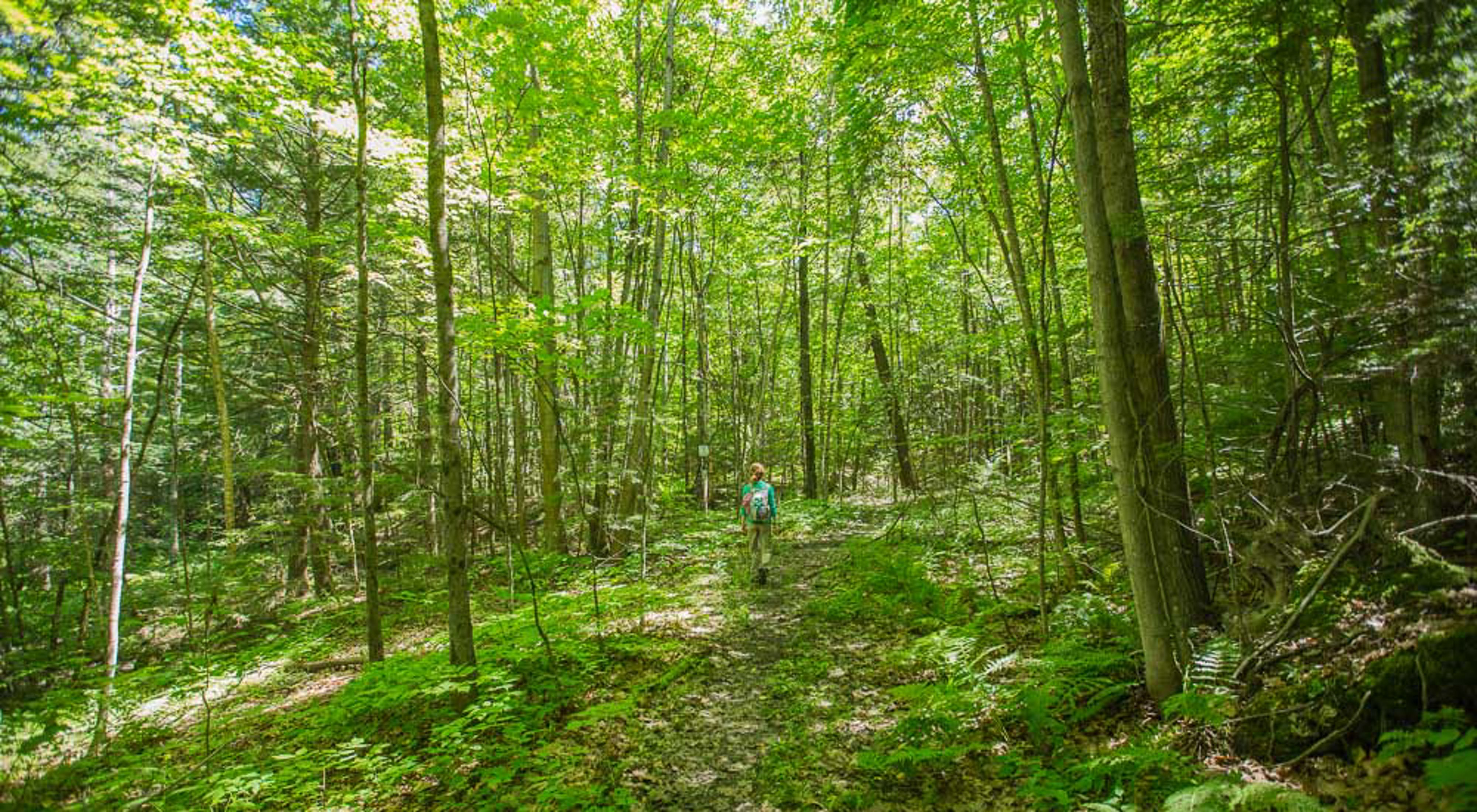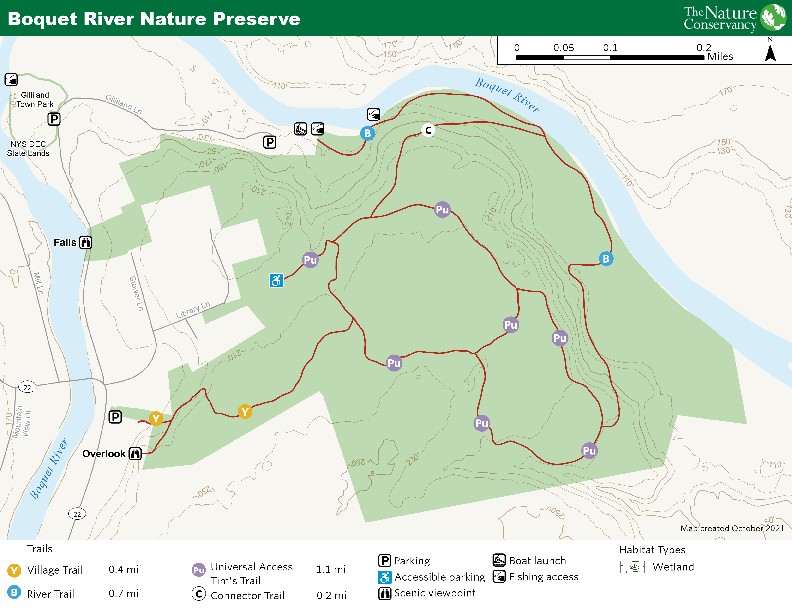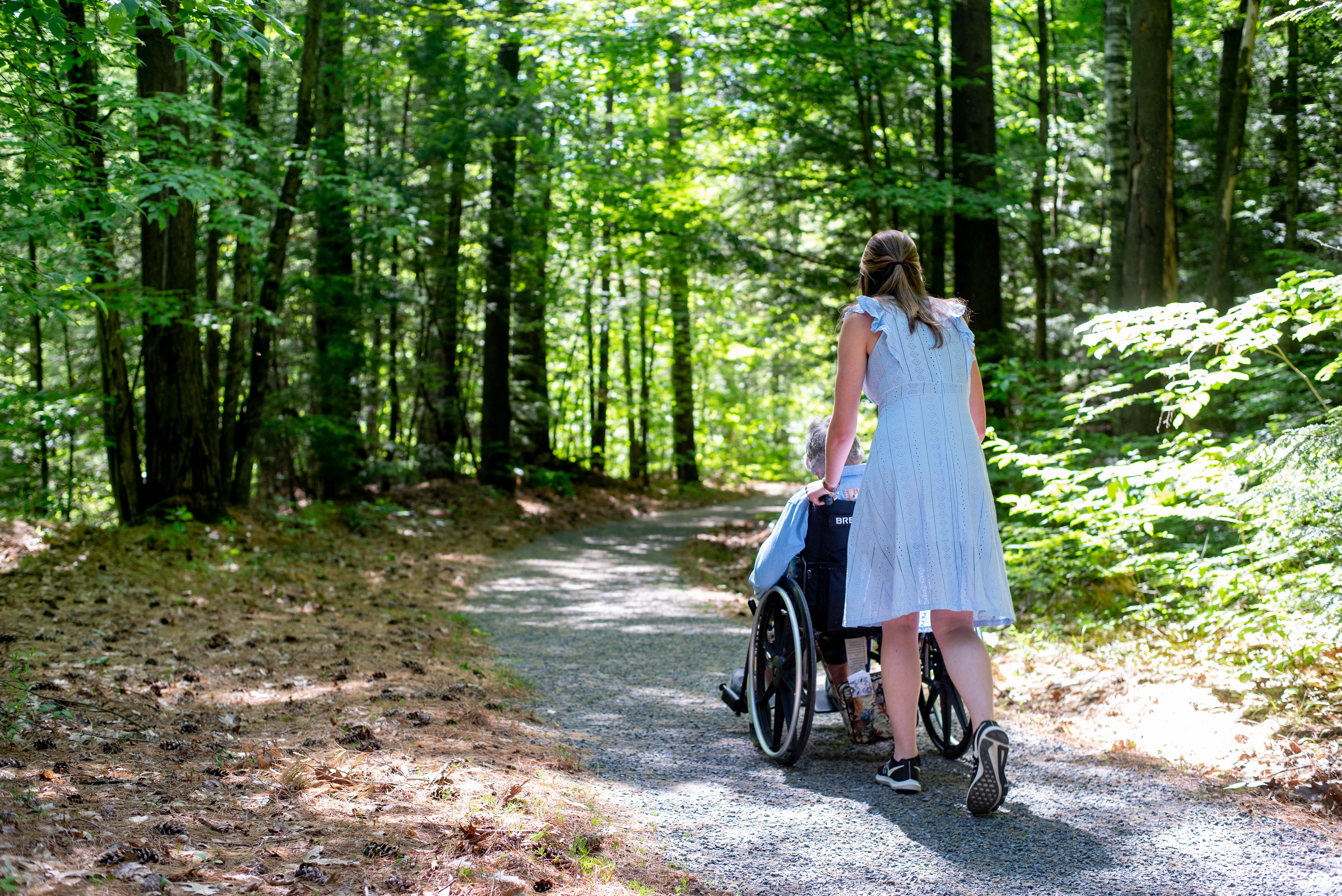Description
Boquet River Nature Preserve is in the heart of downtown Willsboro. It includes 120 acres of floodplain and upland forest, and more than a half-mile of shoreline on the lower Boquet River, the most intact major tributary emptying into Lake Champlain. The Adirondack Chapter of The Nature Conservancy has worked with partners and private landowners over the years to protect nearly two miles of shoreline leading to the mouth of the river. Now we are working to strengthen connections between people and their local lands and waters.
In 2015, second-grade student Cora King submitted the winning name in a re-naming contest and the area was renamed as the Boquet River Nature Preserve. In 2018, the Conservancy purchased an additional 10 acres to link the preserve to downtown Willsboro’s Main Street.
The Conservancy is honored to partner with the town to connect the community to this special place. The upgraded trail between enhances access for people of all ages and abilities to experience nature and its healthful benefits.






